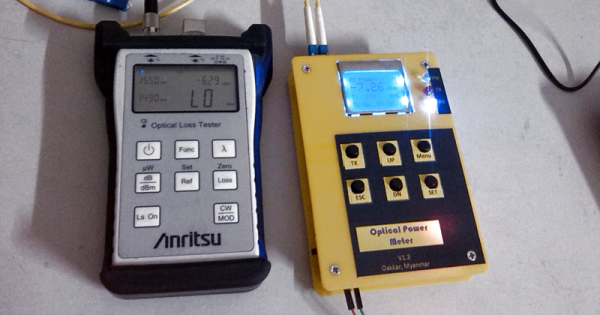This is the type of crowd that’s famous for building their own test equipment. If you need a way to program a flash chip, don’t go out and buy one — you can just build one. Need a spectrum analyzer? You can build that out of copper clad board. For his Hackaday Prize entry, [oakkar7] is building an optical power meter, capable enough to do futzy fiber work, but still completely DIY.
When you get into networking and telecom connections that don’t begin with the letters ‘RJ’, you start to stumble upon SPF transceivers. These ‘small form factor pluggable’ devices are little modular transceivers capable of handling fiber, Gigabit Ethernet, and other slightly weirder bit pipes. When used with fiber, they can measure optical power in dBm and watts, and can be debugged by a UART.
[oakkar]’s optical power meter uses these SPF transceivers, tied together with a fairly simple circuit consisting of an Arduino, a few tact switches, a Nokia LCD, and an FTDI UART. The key in tying all of this together is an Arduino library for SPF and DDM (Digital Diagnostics Monitoring), giving the user access to all the configuration bits in these transceivers.
While the circuit is simple enough to be built on a piece of perfboard, [oakkar] really knocked it out of the park with the enclosure on this one. With just a little bit of laser cut acrylic and a few standoffs, [oakkar] has a device that actually looks professional, and has most of the capabilities of fancier, more expensive tools.















